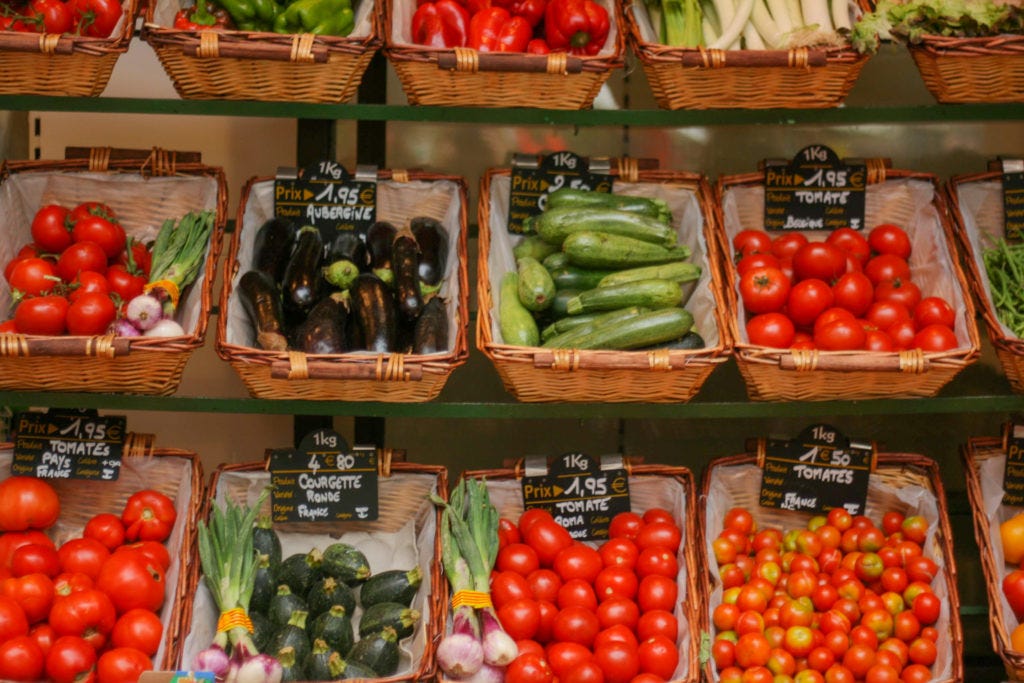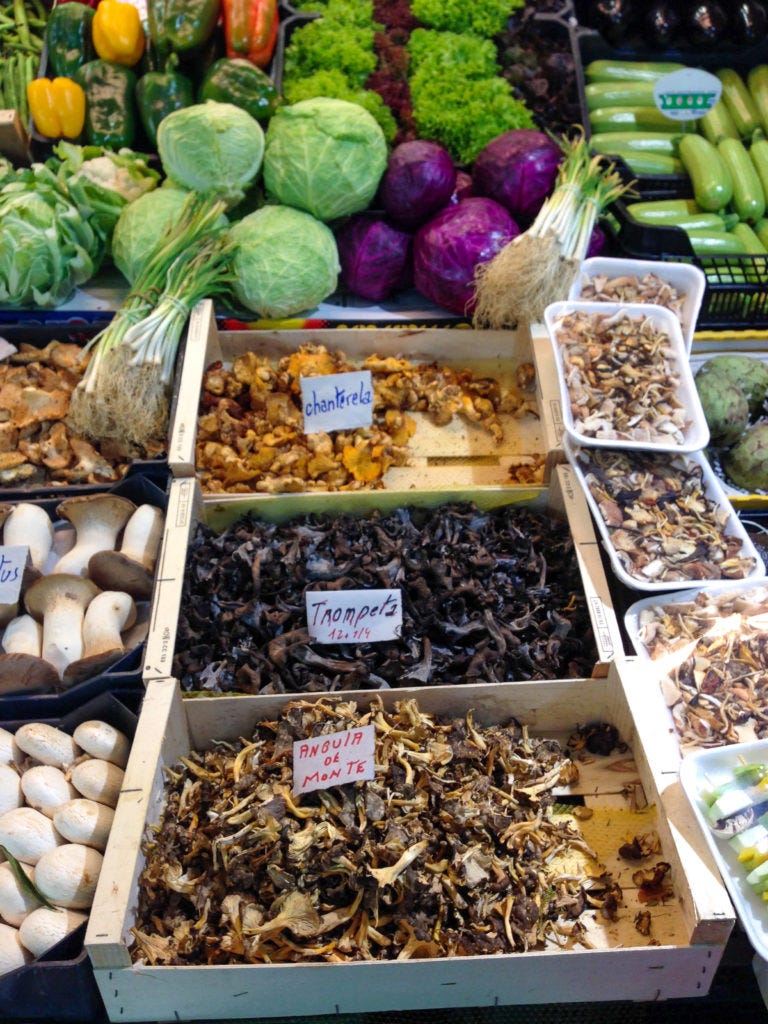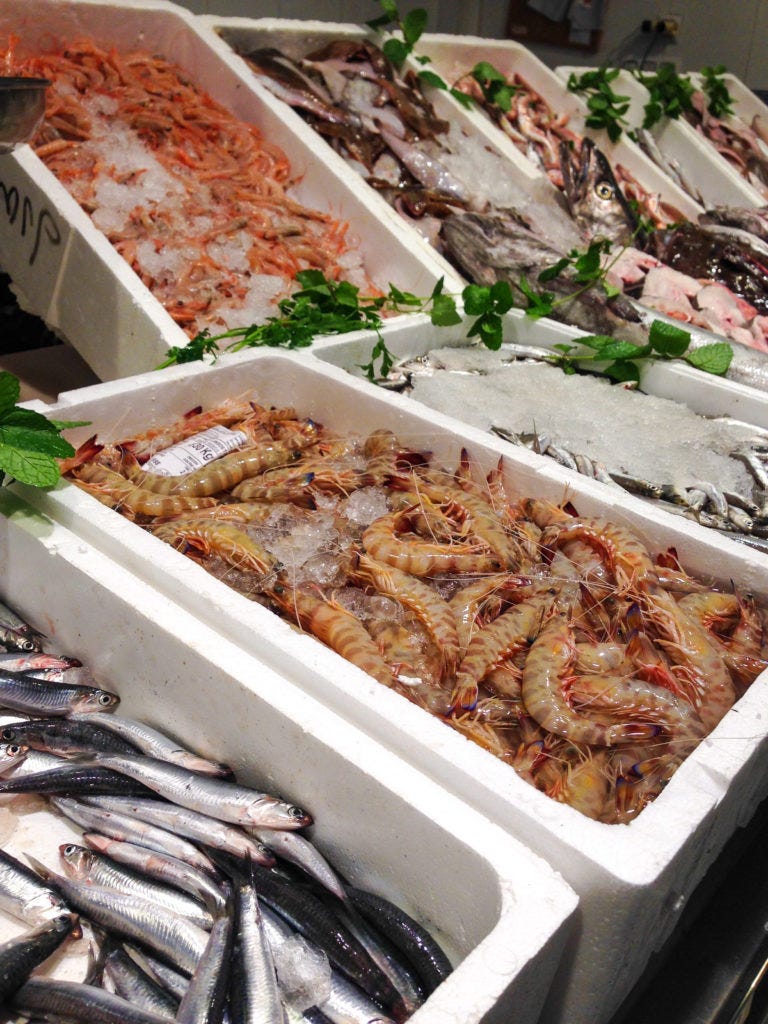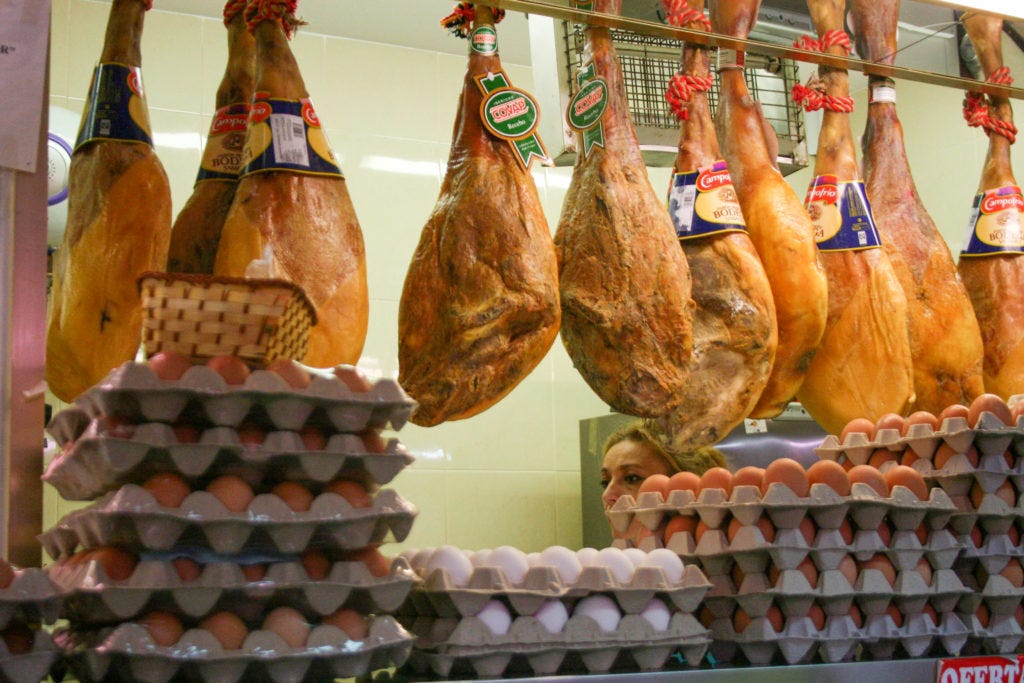My top tips for visiting a market in Spain.
I love doing my shopping at Spanish markets, but I won't say that doing so successfully didn't come with its fair share of lessons. Today I'm sharing the top tips I live by to successfully visit a food market in Spain!
Let's talk Spanish food markets. When you go to one, you'll find everything from fresh fruits and vegetables to eggs and milk, legs of ham, all the meats and offal. If that doesn't sound like heaven, this post probably isn't for you.
Throughout the years and cities, I've made a little home at my local markets in Córdoba, Seville and Madrid, and though I started out barely knowing how to ask for the things I wanted, 10 years later, it's my favorite Saturday morning adventure.

Shopping at a Spanish market can be a downright joyous experience if you know what you're doing, so I thought it'd be fun to compile the top lessons I've learned along my path to Spanish market euphoria.
How to (successfully!) visit a Spanish market
1. Make the rounds: I can't tell you how many times I've gotten to a market, seen something amazing, bought it, and then turned the corner to find either a better product or a better price. Make. The. Rounds! Take stock of what each vendor is offering before anything else.
2. Learn the lingo: If you're just visiting Spain, I understand you're not going to go into a market fully fluent. But learning a few key words goes a long way when it comes to asking for what you want. For most food staples, you'll order by weight, either kilos or grams, though if you're looking for an exact number of items, you could also order three apples or two chicken breasts. Here's a very quick look at a few key terms to arm yourself with before walking into a local Spanish market.
Un cuarto: 1/4 of a kilo
Medio kilo: 1/2 of a kilo
Un kilo: 1 kilo
Gramos: Grams
Pescado: Fish
Carne: Meat
Queso: Cheese
Jamón ibérico de bellota: Acorn-fed Iberian ham
Jamón serrano: Serrano ham
Pan: Bread
Una barra: Baguette
Tomate: Tomato
Higo: Fig
Pera: Pear
Aceite de oliva virgen extra: Extra-virgin olive oil
¿Me pones...?: Can you give me...?
Ponme...: Give me...
¿Cuánto cuesta?: How much does it cost?In practice:
- Buenos días. ¿Me pones 200 gramos de jamón ibérico por favor?
- Ponme medio kilo de higos y un cuarto de tomates.
I've chosen a few specific words above because when combined, they'd make a magical Spanish picnic. Freshly baked baguette dipped in extra-virgin olive oil, in between bites of juicy cut-in-the-moment summer tomatoes. Delicately cured cheese paired with sweet figs or pears. A simple slice of perfectly cured Iberian ham paired alongside serrano ham, to really detect the difference.

3. Avoid the big ones: I know how much visitors love Mercado San Miguel in Madrid and La Boqueria in Barcelona, but if you're looking for a local experience, don't go there. While there are one or two exceptions, most of the stalls and restaurants are over-priced tourist traps that offer a superficial glimpse into the real market experience. Instead, go to a neighborhood market, which you'll find filled with locals doing their daily shopping, and a handful of great spots to grab a quick beer or lunch. My favorites are Mercado Antón Martín, Mercado de los Mostenses and Mercado de Maravillas.
4. Rely on the experts: My favorite part of shopping at markets is getting to know the vendors! These are people who live and breathe their products and very often feel proud of what they have to offer. Talk to them. Ask them what you should buy. Ask what's in season. Ask what they cook at home. Some of the best advice my mother-in-law ever gave me was to make friends with market vendors, and that way they let you into their secret club, giving you the best products and letting you know when something you've ordered maybe isn't in its prime.
5. Morning is best: While I recognize the fact not everyone likes to be at the market right as it opens its doors like I do, the earlier you go, the better. Fewer people means shorter lines, and that means you have a better chance of getting better service or chatting with vendors. You'll also have first pick of the day when it comes to all the produce, and if you're in the market for fish, you can expect to get the day's best catches.

6. Explore, try, and discover: Going to a local market can be scary. I'll never forget the first time I visited one, all alone, my first week in Córdoba. I had no idea how to approach a vendor and get what I wanted. In fact, for the first month or so, I thought I could only order fruit by the kilo—do you have any idea how many small mandarins are in a kilo?! A lot. That first day in the market, though, I sidled up to a bar tucked in between the fruit stands, and I ordered a coffee. I saw people around me eating toast smothered in freshly grated tomato, and I ordered the same. Again, leading by example, I generously poured the dark green olive oil, which had been steeped with crushed garlic, atop my toast. It was a glorious, unexpected bite, and one I only had by venturing outside my comfort zone. I urge you to do the same. Do as you see being done. Try things you've never seen before. Ask the local vendors questions. Order in Spanish, if you can, and when in doubt, pointing and smiles go a long way.
And with that, onward to the magical world of Spanish markets! Here's to new adventures, early morning market trips, seasonal fruits and vegetables, and snagging the best catch of the day.




